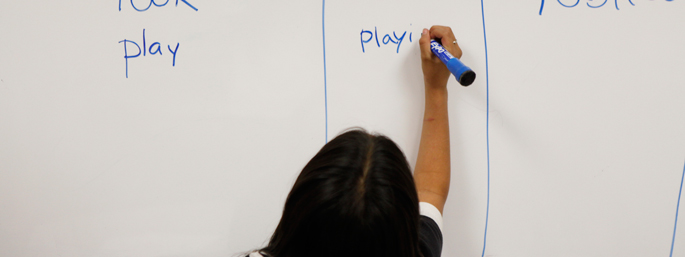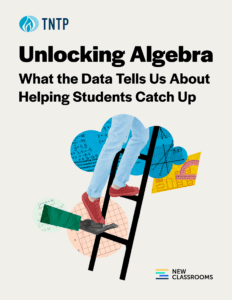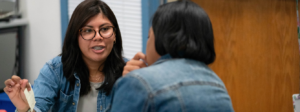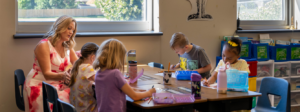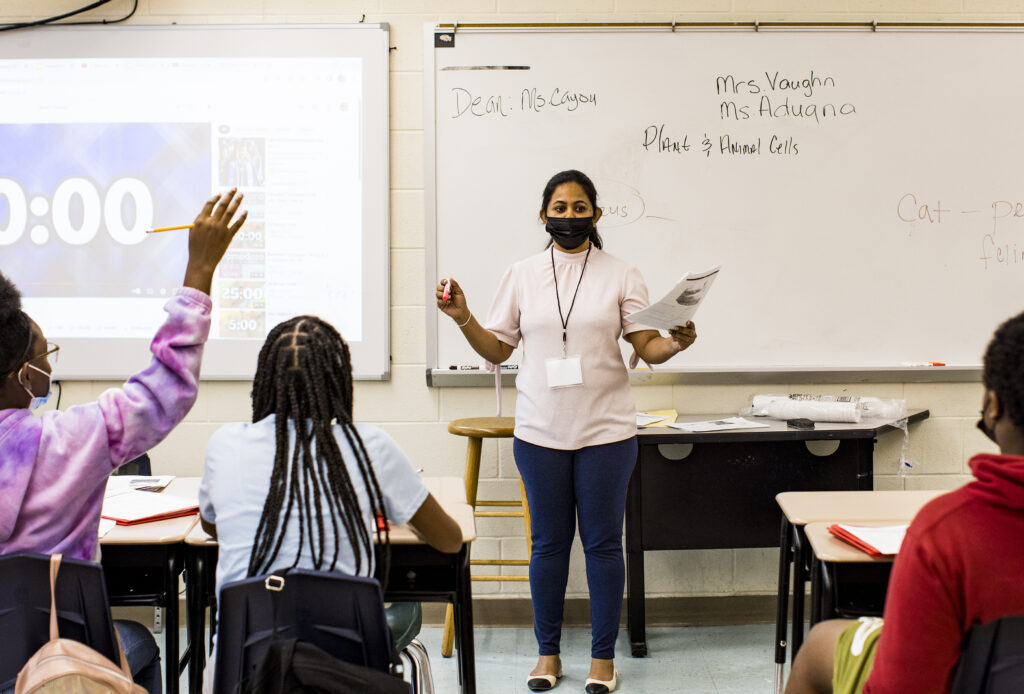East End Community School in Portland, Maine is an amazing place. While many people assume that Mainers are homogeneous, our school is not. Our 430 students hail from 36 countries and speak over 25 languages. 80% of our students are eligible for free or reduced lunch, 55% are English Language Learners, and 34% are newcomers. We are also home to the Maine Center for the Deaf and Hard of Hearing. In June 2021, we will be presenting at the Model Schools Conference in Nashville, TN to share our best practices within the field.
But for a long time, the school was struggling. Just ten years ago, East End was identified as one of the 5 worst elementary schools in the state. Over the next few years, we used our allocated grant money to implement various programs. And while we sometimes saw small increases in student achievement on state testing, there were still significant gaps for our students who have historically been marginalized, including students of color, students with IEPs, and students who are economically disadvantaged..
We knew we needed to do better. So in 2018, with help from TNTP, we completed a survey of our staff. While there were many interesting insights, one data point made us gasp:
Only 3% of staff believed that students could meet grade level expectations.
That was a huge wake-up call for us. That was why we weren’t seeing gains—it was a clear cause and effect. If we don’t believe in our students, we won’t expose them to the right content—and so they won’t be able to achieve and grow. It was a clear cause and effect.
We knew we had to work to be done. Changing mindsets wouldn’t be easy. Luckily, The Opportunity Myth, which had just been released, provided a framework for us to start discussing these challenges. We started by sharing the report with the rest of the leadership team at the school to introduce some of the concepts and takeaways. Then, we incorporated some of the principles into our school wide goals and principles to keep us focused. For instance, we revised our mission statement to include the “four resources” of high expectations, strong instruction, grade-level assignments, and deep engagement:
The students, staff and families of East End Community School value diversity, equity, relationships, growth and achievement. Our community has high expectations for students and believe that students can grow to meet grade level standards and beyond. We believe that having consistent opportunities and access to strong grade level instruction, where students do most of the thinking and are deeply engaging will grow student achievement and empower students for the world.
Then we started the challenging work of implementing these ideas in our classrooms. There were lots of difficult decisions with staff—after all, changing mindsets isn’t easy! But through patience, as well as many honest, small-group discussions, we started to break through. One specific change we made was restructuring how students received interventions and remediation. We used to take them out of their class for that, which meant they missed out on their normal grade-level instruction. So we created STRETCH time, a scheduled time of the day for students to receive those interventions (as well as enrichments)—allowing them to get the support they need while still receiving grade-level instruction.
Our new approach quickly paid dividends. In one year, we had a 15% gain in ELA proficiency. And just as significantly, our historically marginalized students saw some of the biggest gains. For economically disadvantaged students, ELA proficiency went up 18%–and virtually all subgroups saw gains. Students with IEPS saw their proficiency soar from just 3% to 24%–higher than the state average. In mathematics we continue to see concerns. Thus we initiated a new curriculum that has a high ceiling, low floor practice and rich student discourse.
Today, The Opportunity Myth remains a central part of our school’s approach. It’s even a part of our hiring process—we discuss its takeaways with teacher candidates during the interview process. The core of its argument—that adult decisions and adult mindsets deeply affect student opportunity—is both true and incredibly empowering. Though the work is far from done, we remain committed to giving all of our amazing students the opportunity to succeed now and in the future.
